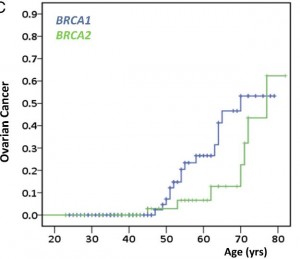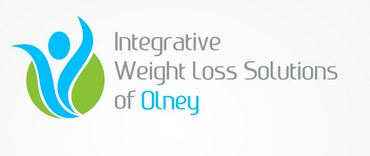|
I have 2 1/2 months to go to complete my time here. I have to thank everyone who has commented on the blogs… I really love reading your comments!!! They are motivating, inspiring, and lift me up. I am missing you all tremendously (and my family even more, if possible) and your words give me the strength I need for the next two months without all of you.
So, many of you have had similar questions about culture differences so I wanted to share with everyone. I know some of you are wondering the same thing, but maybe didn’t want to ask (especially about toilets… — I will leave that till last 🙂 ) Most of the other stuff I think you will find humorous and interesting; a couple of serious things, too. If you don’t get a chance to finish reading in one sitting, PLEASE come back… funny stuff later.
Some Serious Stuff: (this is why I am here… and why others need to come)
Malaria: The average person growing up in Tanzania gets Malaria AT LEAST once a year; they get it so much, that by the time they are young adults (and have had repeated treatments), the symptoms are a fever and maybe runny nose, and many will not have to be treated with medication, but can get better on their own. THE CONCERN: Millions of children a year are untreated and die before the age of 5! (THIS IS A TOTALLY TREATABLE DISEASE!)
Adverse Events: I was asked to help develop an information sheet for adverse events. PLEASE, take your time and walk through this scenario with me…
Let’s say you had a minor procedure done (same day surgery). You go home, and later have an adverse event/complication occur. What do you do?
No, you can’t call 911 because it does not exist… … … now what? No, you can’t call family… they don’t own a car… … Maybe go back to the doctor’s office? Hopefully it is a “short distance” away because you had to take the overcrowded public bus then walk there, and now you have to take the overcrowded public bus then walk back… (sorry, you don’t own a car, either)
You see the provider (who is not an M.D.) and she must report the event and consult with the medical representative of the products used during the procedure. The medical rep determines that a “referring doctor” (specialist, M.D.) must also be consulted. Between the two of them, it is determined that you should be admitted to the one regional hospital available … … miles away.
How do you get there? Oh, you have to wait for the medical representative to come and get you, to take you to the hospital that is miles away over very bumpy dirt roads….
The medical representative is in another part of her territory… … … four hours away…
Welcome to accessible healthcare in a developing country…
(I was thinking it may be inappropriate to put “Humorous and Interesting Stuff” just after a sobering scenario… but this is reality… this is life here… I kind of hope it did effect you… it was not meant to get you down… just the opposite… this scenario hopefully lights a fire and wills someone to want to find solutions…)
The Humorous and Interesting Stuff:
Television:
I have 16 channels; 3 channels play American movies and TV series- I toggle thru those… a lot; regardless of the show or movie I watch (comedy, drama, etc…, the word “God” is bleeped out– remember, I am in a country of about 50/50 Christian/Muslim… also bleeped out are bad words and what I tell my kids are “inappropriate” words (ie,.. stupid, idiot,…— sorry, kids)
One channel plays non stop Rugby (I still don”t get that sport???); I get CNN, but the European edition, BBC, and Al-Jazeer (news, sports, and weather); I get Indian soap operas and African soap operas– both have captioning 🙂
Public Education:
Primary school (elementary) is 7 years; girls start at age 6, boys start at age 7… it’s a maturity thing (no kidding);
Secondary school (middle school) starts at age 13 or 14, and that is for four years; so you finish at age 17-18
High School starts at age 18-19 and is two years; if you fail at any level (which apparently there is a high rate of multiple failure) you have to repeat the entire year, there is no summer school. If you have done the math, there are thirteen grades.
You start University at age 22 (assuming you did not have to repeat), and is for three years, and you receive a certificate; if you want a diploma, you have to apply and get accepted to attend post graduate university for one year (my colleague found out he was accepted today! Go Edwin!!!) Hence, the discussion on education…
–If you share this with your kids, maybe they won’t complain about going to school so much :)… or you can just threaten to send them to school in a foreign country (FYI– Haiti also has thirteen grades)
(From here on… keep track of the “big bucket of water”)
Eating Out:
Almost all local places to eat out are literally outside. It is the culture to always wash hands before eating. It’s not bad… most places have a big bucket of water in the vicinity of the eating area with a spigot attached to it to wash your hands. My colleague commented that the water we are washing with is probably dirtier than what is already on our hands… :/ In some “restaurants” they will actually come to your table with a jug of water and big bowl and will hold both for you as you wash. This is very common.
Meals are usually pretty standard: beef or chicken (each can be cooked two or three ways); veggies (usually spinach and beans); ugali (made of maize and cassava; think of very thick tasteless cream of wheat), and “chips” (french fries). “Tasteless” is not an offense when describing ugali, that is how the locals describe it. It takes on the flavor of whatever you dip it in. It is very filling. The next day for lunch and dinner, switch it around… and the next… switch it around again… Oh, there is no silverware, sometimes you may get a spoon, but you have to ask. Or, you can shape the ugali and use as an edible spoon (which is actually the purpose)… and the meat… pull and eat with the right hand, not appropriate to eat with your left (yeah… I haven’t mastered that one yet….) Besides, you will need your left hand to shoo away the many flies that are landing on your food 🙂 After eating, you wash hands again, from that big bucket of water, but this time you can use powdered soap (I think it is detergent)
As you leave the eating area, you notice the staff washing dishes… dishes that your food was served on… being washed in a big bucket of water… brown… ready and “clean” for the next person…
 The bucket of water to wash hands. The bucket of water to wash hands.
 
Hotel Stays: (Mitch and all my Marriott friend’s… you will want to steal some of these ideas 🙂 )
I have been doing a lot of traveling as we visit the regions to recruit facilities into the social franchise network. It is all driving, regardless of the distance. It is usually myself, my colleague, the PSI regional representative. and the driver (we never do the driving– trust me… these roads require an expert)),
My colleague always reserves the first class hotels for him and me, mostly for safety than anything else… and maybe some for comfort. The PSI regional rep and the driver find alternate accommodations or a local’s hotel.
Average room rate for first class hotel per night: 30,000 – 50,000 shillings ($18-$30); breakfast included; local’s hotel is 15,000 ($9), no breakfast included (we had to stay at a local hotel one night); both will have mosquito nets over the bed.
When I go out for the evening, I leave my room key (room key, not room card) with the front desk; but it’s okay… I packed my computer and valuables in my backpack, …which I also left behind the front desk, as well… (I know my Risk Manager husband is probably having a heart attack!!)
Showering and Towels: only one bath towel, used throughout your stay (no other towels of any kind available) If at an even nicer hotel, you may get a second tattered and stained towel used as a bathmat in front of the bathroom door. You will have flip flops provided to wear for when you enter the bathroom or take a shower, but please leave for the next guest. No flip flops at the local hotel.
Make sure you remove the toilet paper roll and place away from the toilet during showering. The shower head is on the wall, next to the toilet; Also, you may need to notify hotel staff that you DO want hot water so they turn the hot water on in the morning for you… but you may have to remind them again in the morning, and then run water for a few minutes. You don’t have to use the shower. You can bathe…. just use the big bucket of water next to the toilet. Use the scoop in the bucket to pour the water over you. Yes, really! At a local’s hotel, if you have to have hot water, they will boil water for you (if they remember– but, they didn’t) in the morning and bring for you to mix with the cold water in the big bucket. There is always a big bucket of water…
 
If there is anything that does not meet your standard and you decide to complain, be aware… it could get worse for you the next day (so I was told). My colleague and I shared stories… I told him if you complained in the states that you would get upgraded to a suite, get your room free for the night, and in addition to the free breakfast, you would get dinner for two in the hotel restaurant! LOL!! …He also laughed at the concept of turn down service 🙂
Rest Stops:
There are none. It usually consisted of the driver pulling over to a series of shanty built fruit stands on the side of the road and paying someone 100 shillings (6 cents) to let me use the “community toilet” 50 yards from the road. The outdoor outhouse is associated with the group of mud homes and shops that make up the community… As I “use the facilities” I consider how lucky it was that I brought all dresses to wear… long pants would have been more challenging to keep from dragging the wet floor of the “restroom” …what’s a girl to do… i really tried to drink less water… and I learned the hard way that i needed to pack my own “tissue” because there is none… nowhere… not for ANY purpose… get it? …oh, but there is that big bucket of water…
Below is a bathroom in one of the clinics. That let me use the “staff” restroom. This is very fancy with tiled walls and flooring. Replace tiles with wet, muddy floors and wooden walls and that is the majority of “public” restrooms… notice the big bucket of water…

I am having fun sharing all my experiences with you. This lifestyle doesn’t bother me. It keeps life back in the US in perspective. It makes me appreciate what I have… and what I need… and gives a much better realization of what I don’t need. I know I am blessed with an amazing family… an incredible husband who seems to be getting along well without me (ummm… too well!)… and the best group of friends ever who are willing to keep track of me for a while :):)
Don’t worry… I have not gotten sick or contracted anything weird… despite the bugs, the flies, the used flip flops, the mosquitos, the washing with dirty water…
Besides, I have a big bucket of water… :):)
|
























































 Some of our patients have asked about taking Biotin to treat hair loss and brittle nails. I asked our nutritionist Rick to comment:
Some of our patients have asked about taking Biotin to treat hair loss and brittle nails. I asked our nutritionist Rick to comment:





















